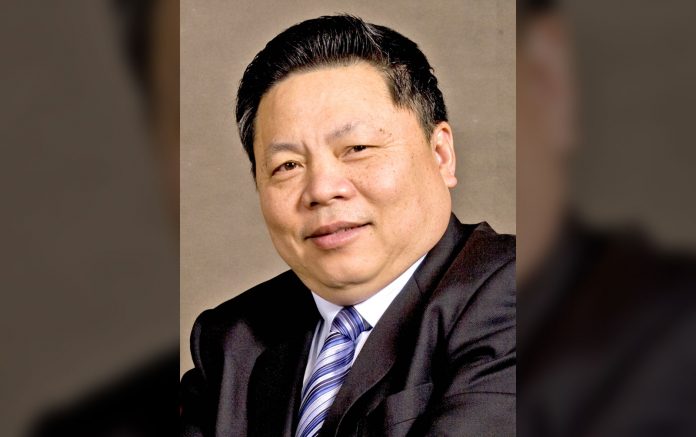What is the current standard of care in the adjuvant setting post-resection of high-risk NSCLC in your practice or nationally?
Posted: October 2017
Current Chinese Lung Cancer Diagnosis and Treatment Guideline from the Chinese Society of Clinical Oncology (CSCO) recommends adjuvant platinum- based doublet chemotherapy as the standard of care (SOC) for completely resected stage II-III NSCLC. This includes node-positive tumors as well as T3 or T4N0 NSCLC. We generally do not recommend adjuvant chemotherapy for node-negative tumors under 7 cm. In clinical practice, some patients refuse chemotherapy after surgery. They prefer traditional Chinese medicine treatment, although this is not considered SOC in China.
ADJUVANT trial (CTONG 1104) provides clear evidence that adjuvant gefitinib can prolong disease-free survival by approximately 10 months with lower toxicity and better quality of life (QoL) compared to standard platinumbased chemotherapy in EGFR-mutant (EGFR-mt [+]) NSCLC. This study justifies an alternative treatment strategy for EGFR-mt (+) patients with N1-N2 resected NSCLC who are averse to or ineligible for chemotherapy. Based on our data, I will recommend adjuvant gefitinib for EGFR-mt (+) NSCLC patients with N2 disease because chemotherapy in this setting yields a median DFS of only 9–12 months. This population remains at very high risk. I believe most patients and most thoracic surgeons in China would accept this recommendation.
The absence of a documented OS advantage is not a deterrence. Almost all EGFR TKIs clinical trials in advanced NSCLC have shown a striking PFS advantage compared to SOC chemotherapy, but no difference in OS. Despite the absence of a clear OS benefit, most practitioners accept these results, and first-line EGFR TKIs are now the SOC for recurrent or metastatic EGFR-mt (+) NSCLC patients. Why should we not apply similar criteria to the adjuvant setting for EGFR-mt (+) resected NSCLC? For this reason, we selected DFS as the primary endpoint, and this strategy has been adopted in other similar trials. In this situation, with crossover to an EGFR TKI expected in the control arm at the time of disease progression, we believe that all patients with driver genes will live longer than they have previously. In addition, we need to acknowledge that many factors beyond EGFR status and the nature of treatment will influence OS. While OS is important, a DFS advantage will likely lead to clinical benefits, both physical and psychological.
In East Asia, driver genes account for approximately 40% of the NSCLC patient population. This is a huge population, proportionally larger than similar populations seen outside of East Asia. Now that our trial has been reported, there are two therapeutic options for these patients after surgery: adjuvant TKI or chemotherapy. For so-called wild-type patients, adjuvant chemotherapy is the only treatment we recommend outside of a clinical trial.
There are still unanswered questions. In the adjuvant setting, we still need to figure out a way to better select patients for adjuvant TKIs as well as determine how long such treatment should be given. Is there an optimal sequence for adjuvant TKIs and chemo? In addition, we need to determine the optimal therapeutic adjuvant approach for “wild-type” patients whose tumors do not harbor an oncogenic driver. In this regard, checkpoint inhibitors may ultimately play an important role.
Do you restrict adjuvant therapy to node (+) patients or also include those with lesions 4 cm or larger?
For adjuvant chemotherapy, we restrict patients with stage II-III. Stage II-III NSCLC not only includes node positive, but also T3 or T4 with N0. If only lesion 4 cm with N0 (stage IB), we do not give adjuvant chemotherapy.
Does the phase III trial presented at ASCO, showing a DFS advantage for gefitinib over platinum-based chemo, alter practice either locally or nationally?
ADJUVANT trial (CTONG 1104) provides clear evidence that adjuvant gefitinib could postpone disease recurrence by 10 months, decrease toxicity, and increase QoL. We provide an option for patients with N1-N2 resected NSCLC, and in my mind, I will recommend adjuvant gefitinib for patients with N2 disease. Because median DFS of N2 is only 9–12 months, this population is very high risk. I think most patients and thoracic surgeons will accept this recommendation.
From a philosophical perspective, is OS the ultimate arbiter of benefit? Or can DFS be considered a surrogate? In other words, is DFS alone sufficient to leverage particular regimens?
Almost all EGFR TKIs clinical trials on advanced NSCLC showed PFS is superior with chemotherapy, but there is no difference in OS. Everybody accepts these results, and first-line EGFR TKIs is now the standard of care for EGFR-mt (+) NSCLC patients. Why are we overcritical of the adjuvant setting for EGFR-mt (+) resected NSCLC? In our trial and another ongoing adjuvant target trial, DFS is always designed as the primary endpoint. All patients with driver genes will live longer than before, and many factors will influence OS. In this situation of no difference in OS, I think DFS is very important because patients will get benefit both physically and psychologically.
Are the standards different in those with oncogenic drivers compared to the larger “wild-type” population?
In East Asia, patients with NSCLC and driver genes account for 40%. This is also a huge population. After our trial, there were two options for these patients after surgery: adjuvant TKI or chemotherapy. For those so-called wild-type patients, adjuvant treatment is only chemo.
What future research directions should we be pursuing in the adjuvant setting?
For the adjuvant setting, I think we need to select precisely which patient could benefit from adjuvant TKIs and determine how long treatment is needed. What is the optimal sequence of adjuvant TKIs and chemotherapy? and so on. And on the other hand, when treating patients with wild-type in the adjuvant setting—could checkpoint inhibitors play an important role for these patients? ✦











